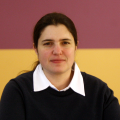Chemical space is vast, with best estimates suggesting we have as yet characterized less than 1 part in 10^50 of all possible compounds. The need for efficient discovery of new materials and catalysts mandates that we identify smart ways to map out and explore chemical space. Although virtual high throughput screening with first-principles simulation has emerged as a powerful tool for materials discovery, even more efficient methods such as machine learning models become essential to tackle this enormous combinatorial challenge. I will describe our recent development of the first open source toolkit for inorganic molecular discovery, molSimplify. i) We introduce a first-of-its-kind divide-and-conquer approach to generate precise geometries of new inorganic complexes for automated simulation and characterization with DFT. ii) We leverage multimillion-molecule organic libraries for inorganic discovery that ensure stable building blocks while maximizing molecular diversity to provide efficient traversal of chemical space. iii) We train machine learning models (e.g., neural networks and kernel ridge regression models) to predict quantum mechanical properties in microseconds for use in efficient screening workflows as opposed to minutes or hours with DFT. iv) We develop automated strategies to uncover structure-property correlations for design. I will describe how implementing all of these techniques in our open source toolkit has advanced applications in materials science and catalyst design.
Speaker:
Institution:
Location:

